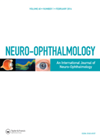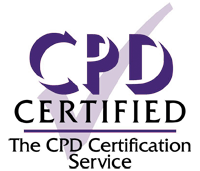You searched for "information"
The PMFA Journal - February/March 2019 issue available
4 March 2019
|
Research & Development
FEATURES IN THIS ISSUE: The truth behind facelift myths by Akshay Sanan, Sam P Most. / The gender affirmation surgery MDT by Michael Fee Yen Ng, Tareq Ammari. / Facial veins - diagnosis and treatment optionsby Victoria Smith and Mark Whiteley. AND MUCH MORE...
RNIB makes first Scotland stop in Glasgow on UK ‘Braille and Beyond’ library tour to celebrate two hundredth anniversary of braille
On Tuesday, January 28, the Mitchell Library in Glasgow hosted a special event celebrating the importance of braille and tactile literacy, organised by sight loss charity RNIB in partnership with Glasgow Libraries. Open to everyone, the event offered a day...Uveitis Second Edition
1 October 2014
| Sofia Rokerya
|
EYE - Vitreo-Retinal
This book is a comprehensive source of information on the subject of uveitis. The target audience includes ophthalmologists, allied health professionals with special interest in this area and general physicians treating patients with multisystem inflammatory disease with involvement of the...
Incidence and risk factors of late in the bag intraocular lens dislocation
The aim of this study was to identify risk factors for late in the bag dislocation over a 21 year period. Worldwide the incidence varies from 0.05% to 3.0%. In this Swedish study they report an increase in incidence in...An unusual case of partial oculomotor nerve palsy
1 August 2016
| Claire Howard
|
EYE - Neuro-ophthalmology
|
Midbrain infarction, oculomotor nerve palsy, ptosis, upgaze palsy
The authors present an unusual case of intra-axial oculomotor nerve involvement due to midbrain infarction. The 65-year-old male patient presented with unilateral complete blepharoptosis and slight limitation of upgaze. Neurological examination revealed a complete ptosis of the left eyelid, slight...
Understanding and confronting bacterial endophthalmitis
Abdus Samad Ansari highlights the importance of early recognition of this condition using an unusual presentation. Endophthalmitis is a medical emergency with devastating consequences. Despite adequate treatment, severe cases frequently result in permanent blindness. Endophthalmitis involves inflammation of both the...Paediatric ptosis
Manoj Parulekar and colleagues provide a comprehensive overview of the diagnosis, assessment and management of childhood ptosis. Blepharoptosis (commonly referred to as ptosis – Greek, πτῶσις, ‘to fall’) is a condition where the upper eyelid is in an abnormally low...The science of glaucoma management: highlights of the 2020 Moorfields International Glaucoma Symposium
Held earlier this year, the 12th annual Moorfields International Glaucoma Symposium provided a forum for advanced clinical and scientific exchange in glaucoma management. The authors describe the key presentation themes and debates, highlighting specific topics of interest to glaucoma specialists....HS-UK ‘Improving Outcomes’ Clinical Decisions & Management Course
20 June 2025
The ‘Improving Outcomes’ Biometry: Clinical Decisions & Management course focuses on how biometry measurements can be used to guide clinical decision making. This includes evidence-based approaches to selecting the appropriate formulae, planning for more complex cataract cases, and approaches to...
Ophthalmic learning through the lens of cognitivism and constructivism
9 October 2020
| Rasan Burhan, Andrew Ross, Sajeel Ahmed
|
EYE - General
Learning in ophthalmology is multi-faceted, from understanding the fundamentals of eye anatomy and physiology to higher order skills such as performing cataract and vitreoretinal surgery. Having a strong foundation in the basics is a necessity for higher order knowledge synthesis,...
3rd Ophthalmic Drug Delivery Summit
28 January 2025
-30 January 2025
Translating Long Lasting Efficacy & Less Invasive Retinal Drug Delivery The importance of matching the right drug delivery route to the right ophthalmic disease is more pressing than ever. The 3rd Ophthalmic Drug Delivery Summit is the premier gathering for...






